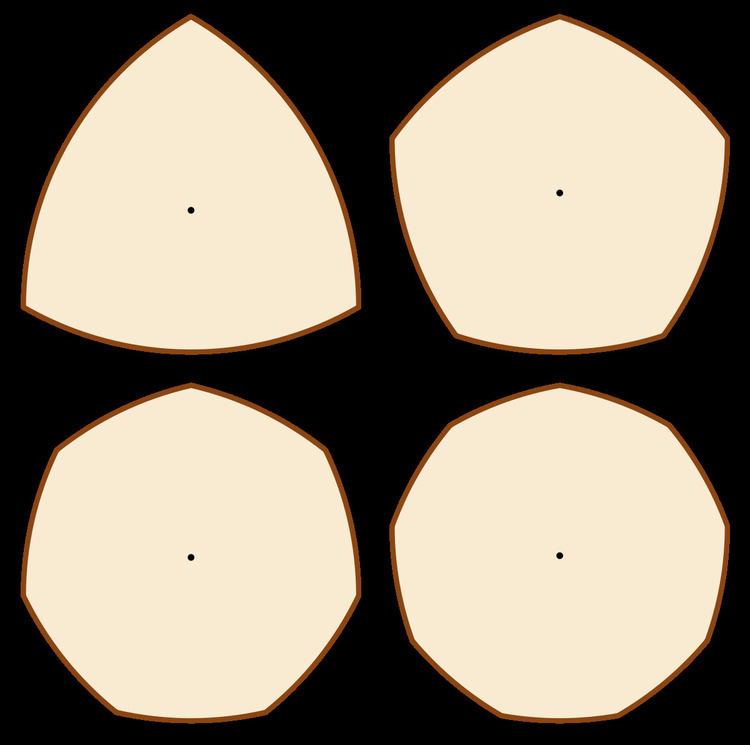 | ||
In geometry, Barbier's theorem states that every curve of constant width has perimeter π times its width, regardless of its precise shape. This theorem was first published by Joseph-Émile Barbier in 1860.
Contents
Examples
The most familiar examples of curves of constant width are the circle and the Reuleaux triangle. For a circle, the width is the same as the diameter; a circle of width w has perimeter πw. A Reuleaux triangle of width w consists of three arcs of circles of radius w. Each of these arcs has central angle π/3, so the perimeter of the Reuleaux triangle of width w is equal to half the perimeter of a circle of radius w and therefore is equal to πw. A similar analysis of other simple examples such as Reuleaux polygons gives the same answer.
Proofs
One proof of the theorem uses the properties of Minkowski sums. If K is a body of constant width w, then the Minkowski sum of K and its 180° rotation is a disk with radius w and perimeter 2πw. However, the Minkowski sum acts linearly on the perimeters of convex bodies, so the perimeter of K must be half the perimeter of this disk, which is πw as the theorem states.
Alternatively, the theorem follows immediately from the Crofton formula in integral geometry according to which the length of any curve equals the measure of the set of lines that cross the curve, multiplied by their numbers of crossings. Any two curves that have the same constant width are crossed by sets of lines with the same measure, and therefore they have the same length. Historically, Crofton derived his formula later than, and independently of, Barbier's theorem.
An elementary probabilistic proof of the theorem can be found at Buffon's noodle.
Higher dimensions
The analogue of Barbier's theorem for surfaces of constant width is false. In particular, the unit sphere has surface area
